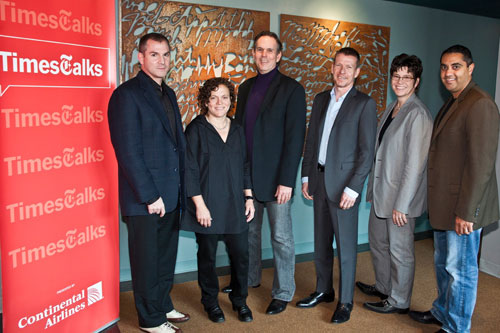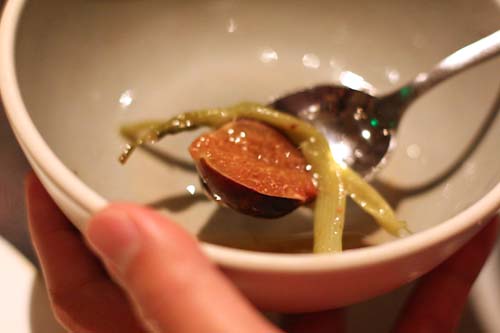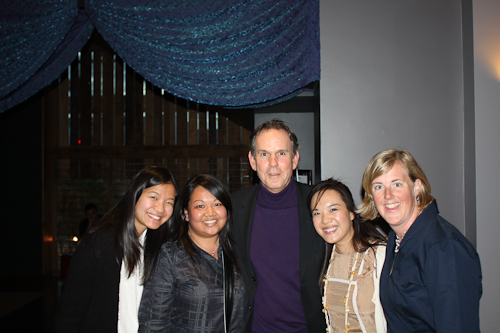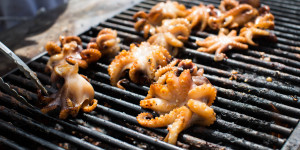New York Times TimesTalks: The Way We Eat Nowfeatured

Backstage at TimesTalks in SF The Way We Eat Now.
(l-r): Frank Bruni (staff writer, Times Magazine); Traci Des Jardins (Jardiniere); Thomas Keller (The French Laundry); Gerald Marzorati (editor, NYT Magazine); Kim Severson (staff writer, NYT Dining); Michael Mina (Mina Group). Photo: (c) 2010 Peter DaSilva
On Tuesday evening, I had the pleasure of attending the New York Times TimesTalks “The Way We Eat Now” discussion with Traci Des Jardins of Jardiniere, Thomas Keller of The French Laundry, Michael Mina of the Mina Group and Kim Severson, New York Times dining reporter. Moderated by Frank Bruni, staff writer for The New York Times Magazine and former Times restaurant critic, the conversation centered on food (obvi), restaurants, and how West Coast culinary trends influence the nation.
Bruni kicked off the talk by asking the question, “Why is Northern California such a fertile crescent, a magnet for great chefs?”
The unanimous response was a mix between the ingredients (it’s all about the product – what’s in season, what’s local, what’s delicious), creativity (the ability to break the rules), and customers (people really love food here…versus LA, where Des Jardins worked for a number of years and noticed, “People were really into what they didn’t eat.”).
Comparisons were struck between NY cuisine and SF cuisine.
Is there an East Coast/West Coast rival? A Biggie/Tupac kind of thing? As Severson put it, if a NY chef comes to SF, does the chef community not invite them over to the mah jong table right away?
The panel ventured to describe the difference as food being more intellectual in NY versus more soulful in SF. In NY you see restaurant as theater more often than in SF, where it tends to be more about the food on the plate. Which isn’t to say that it’s all just figs on a plate here. Keller pointed out that because the Chez Panisse lineage is so strong here, there is often a misinterpretation that technique isn’t as important to NorCal chefs.

Ad hoc 11.6.09: Baked Black Mission Figs & Steamed Fennel
(An aside: about a month after David Chang made that infamous statement, I dined at Ad Hoc and was positively tickled when I saw that our side dish was in fact, figs on a plate. Perfectly caramelized, technically sound, sweet and ripe, figs on a plate.)
As for the differences in the culture of dining, Severson made the observation that people don’t cook as much in NY. There, the fabric of everyday life is to eat out (or eat in — God, I miss getting my sushi delivered at any hour right to my doorstep) versus cooking every night. Here, people really take advantage of all the accessible produce we have at our fingertips.
An interesting question was raised regarding the state of fine dining as we know it, given recent trends of food cart popularity and pop-up kitchens. As we see the wall collapsing between the chef and the diner, what does this mean for restaurants like The French Laundry, Jardiniere, and Michael Mina?
The chefs agreed that there will always be a place for fine dining. “Fine dining is part of human nature,” Keller said. “We want to feel special and we want to celebrate sometimes. French Laundry is a celebration restaurant, and that won’t change.”
There is, however, room for both ends of the spectrum. Des Jardins, who has both white linen and paper plate establishments argues, “It doesn’t have to be precious, it can be accessible.”
TimesTalks in SF: “The Way We Eat Now”
Tuesday, May 18, 2010
Sundance Kabuki Cinema, SF








Add comment